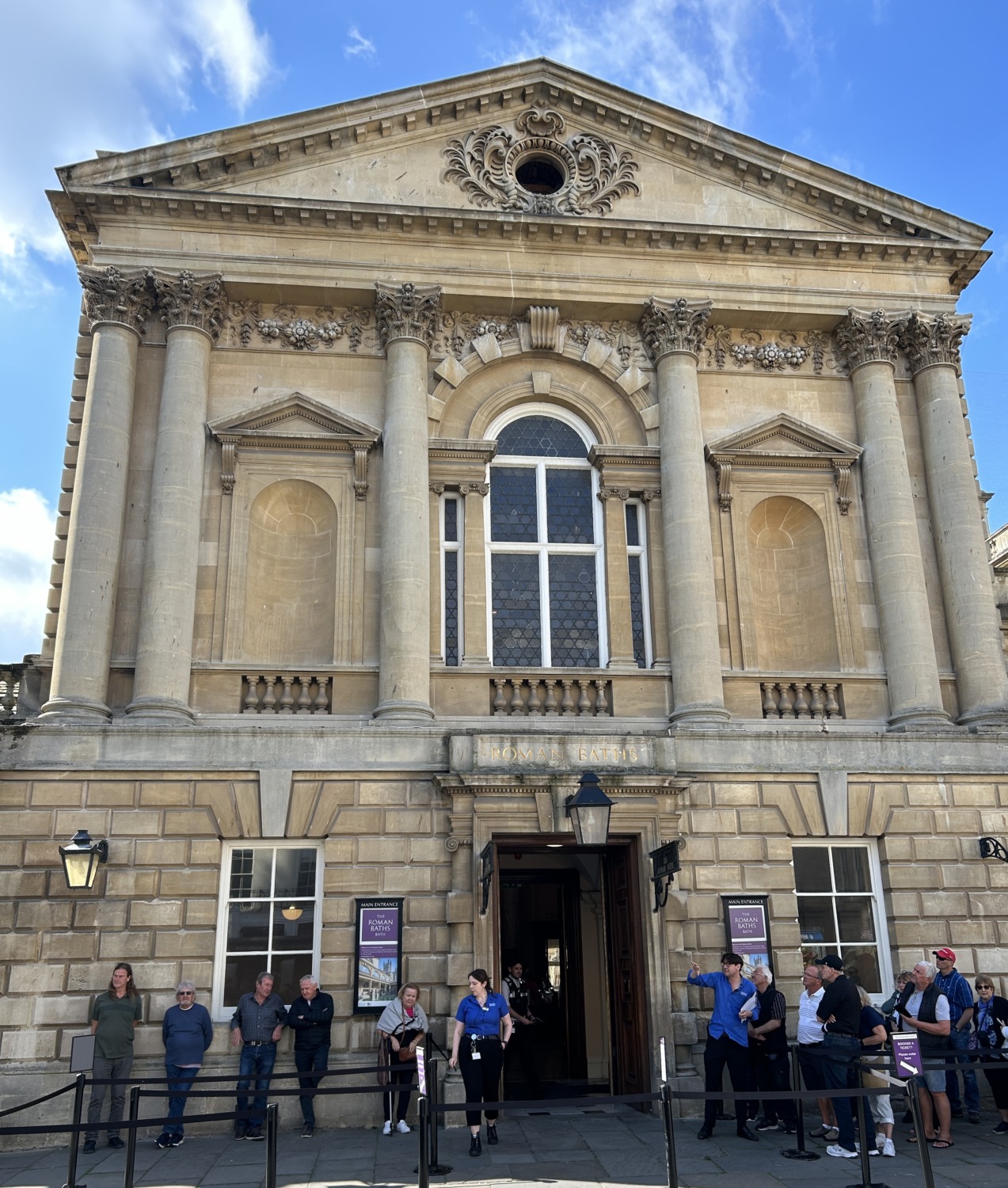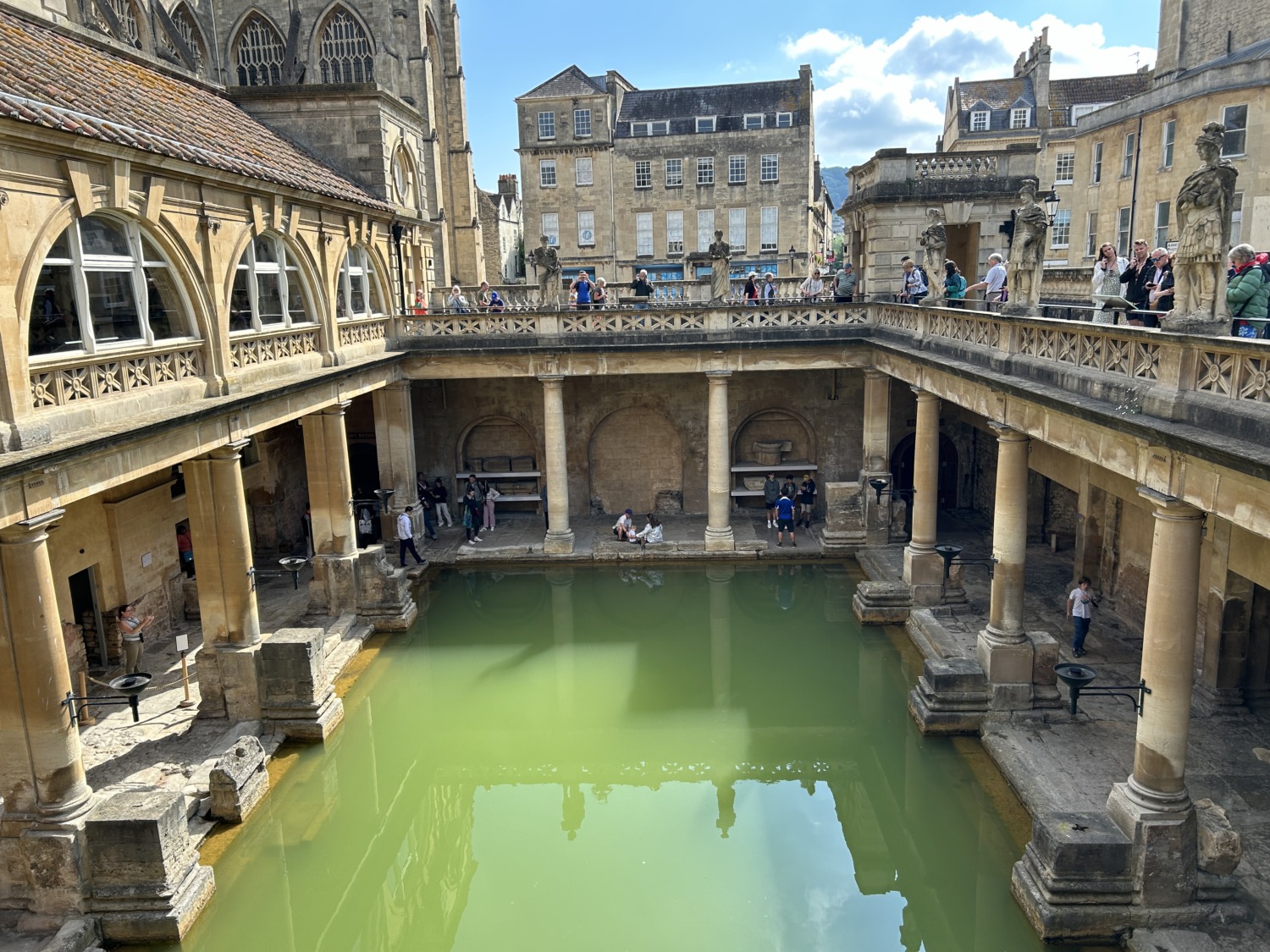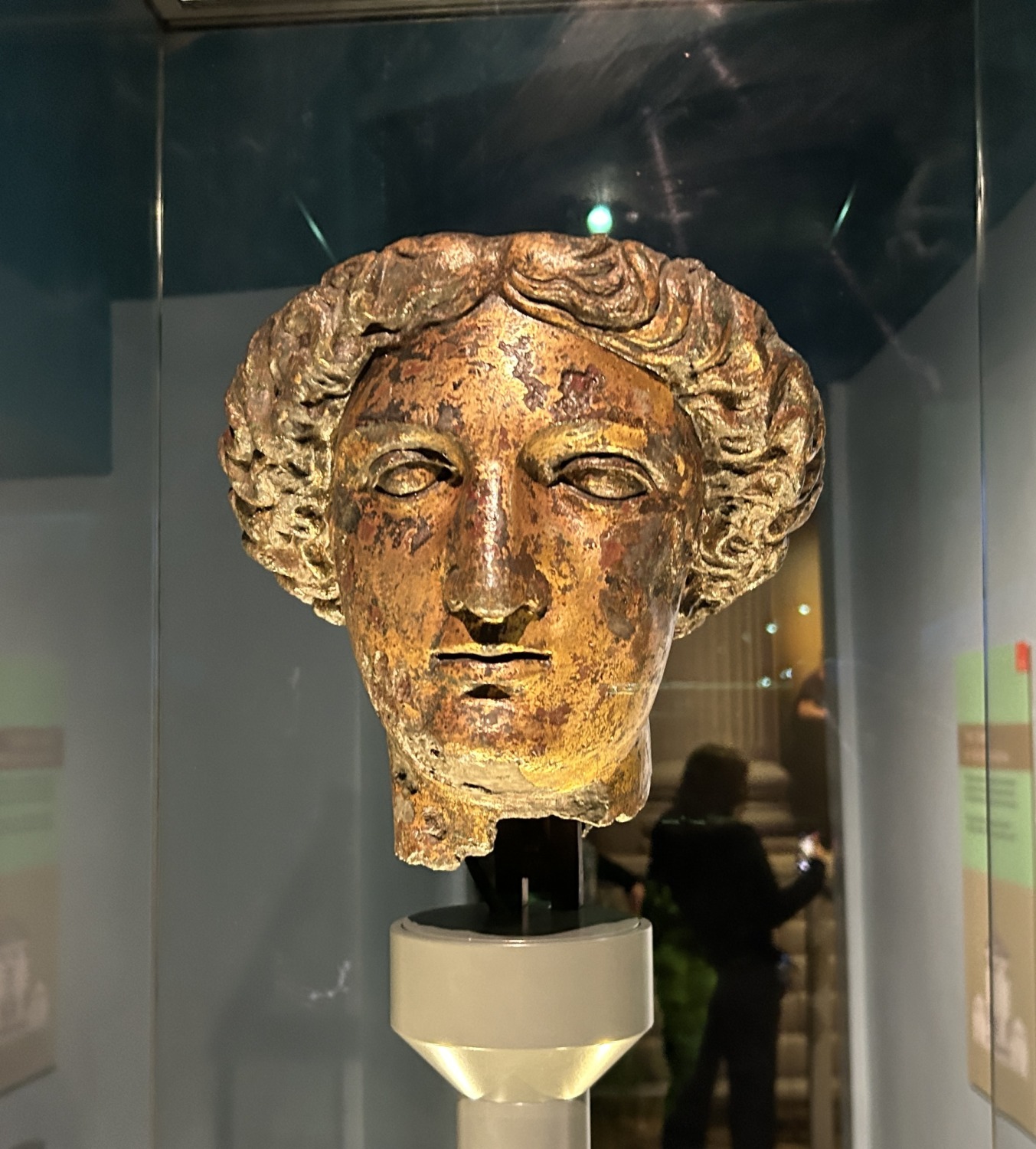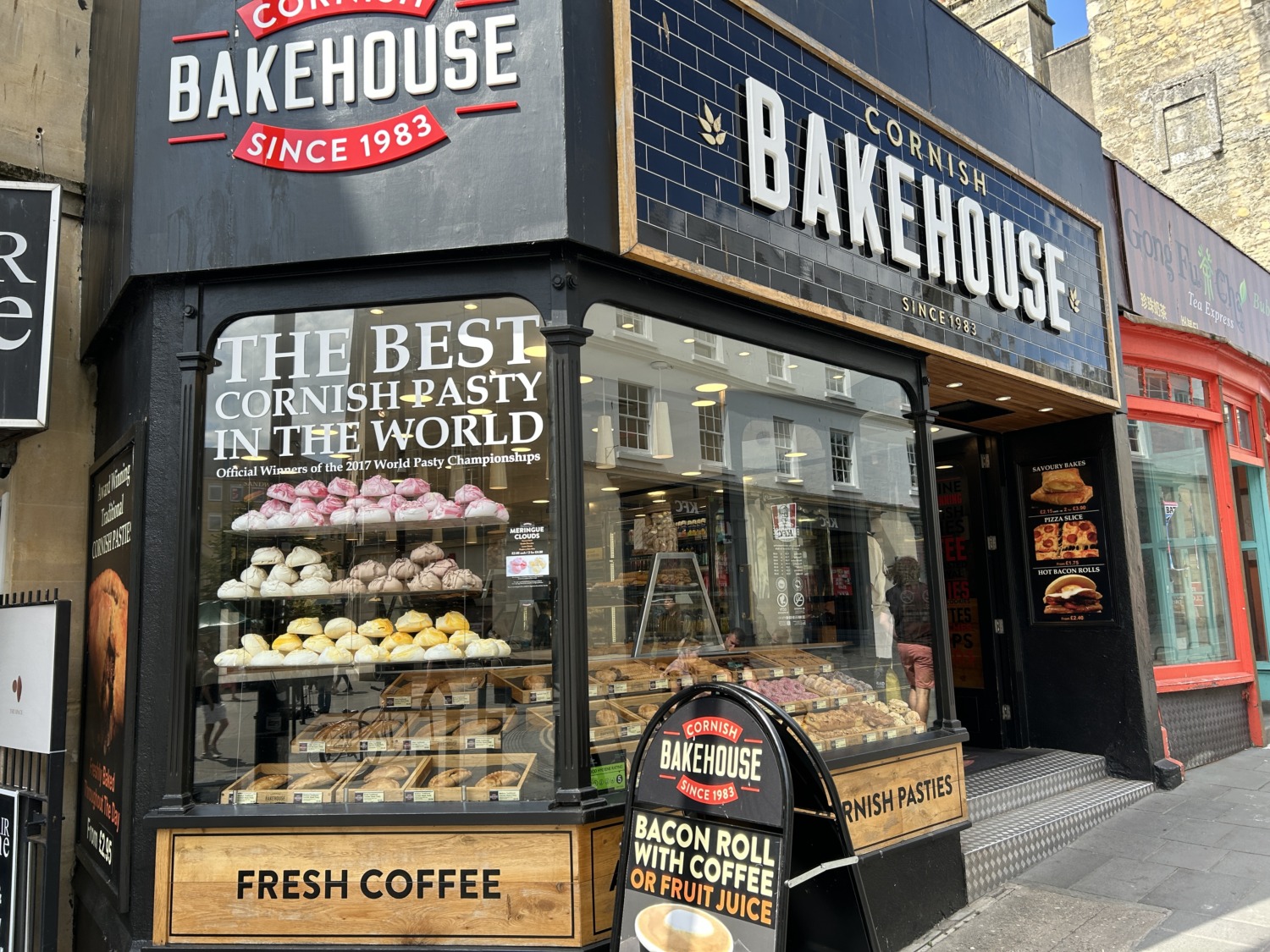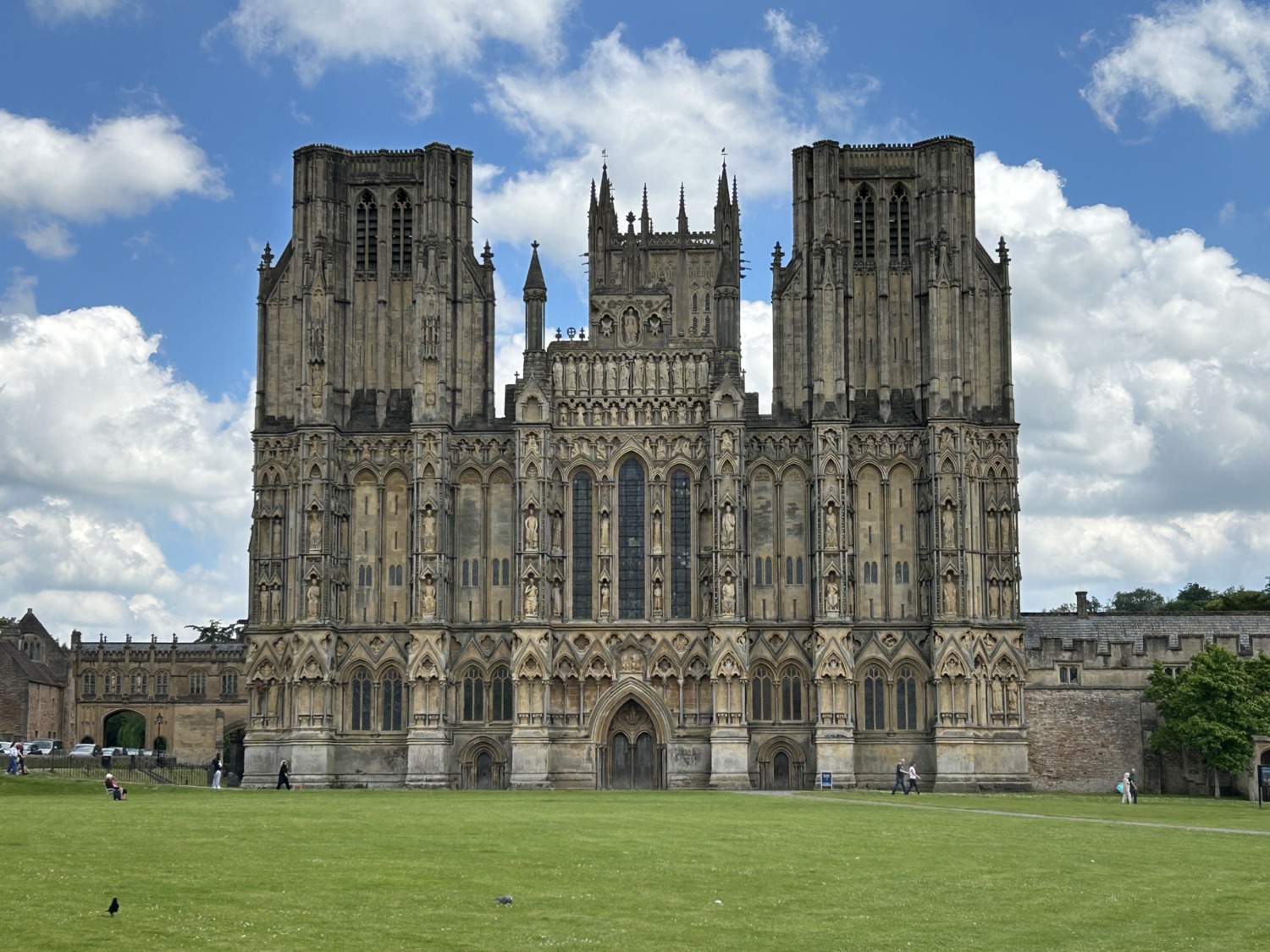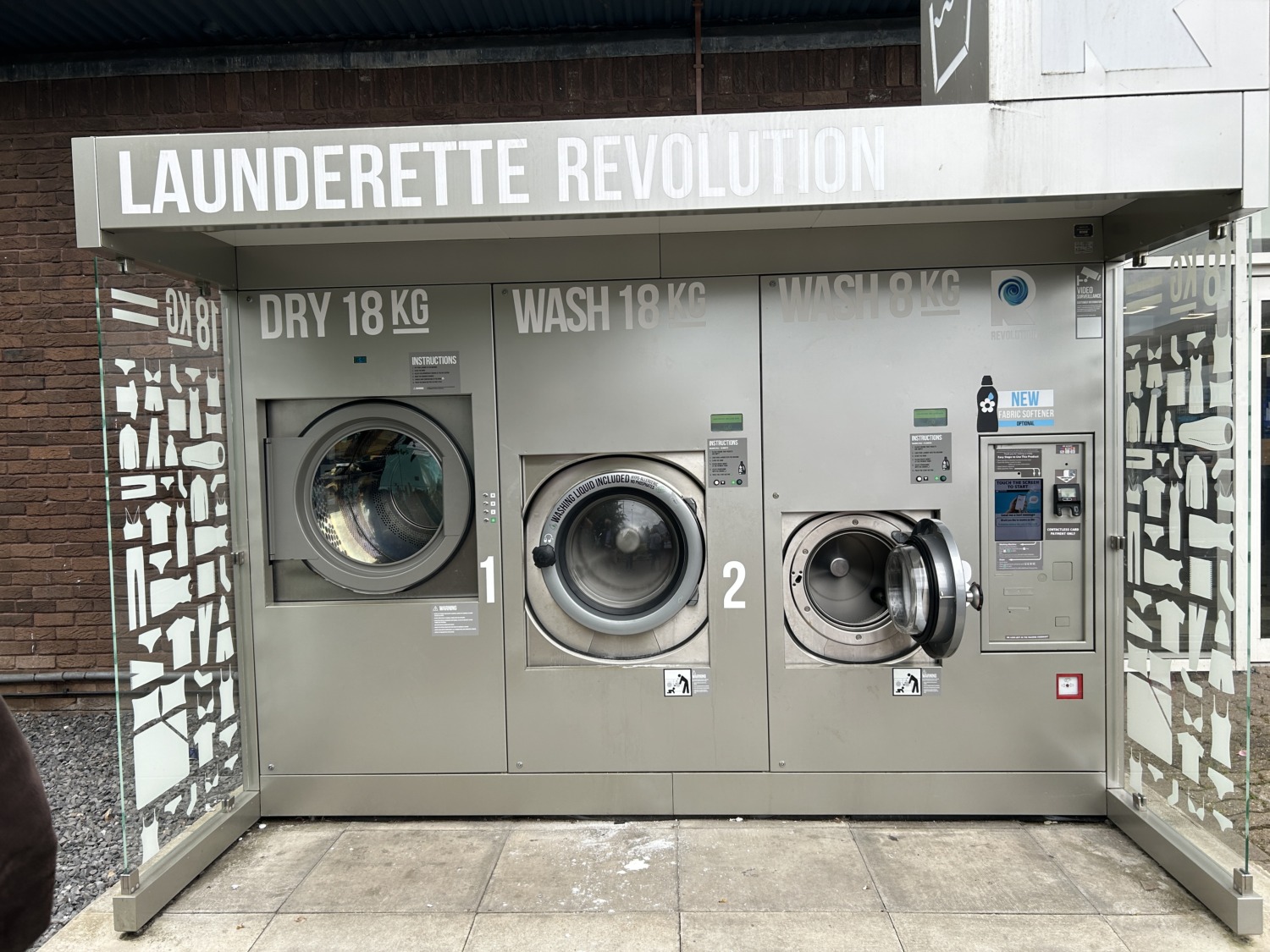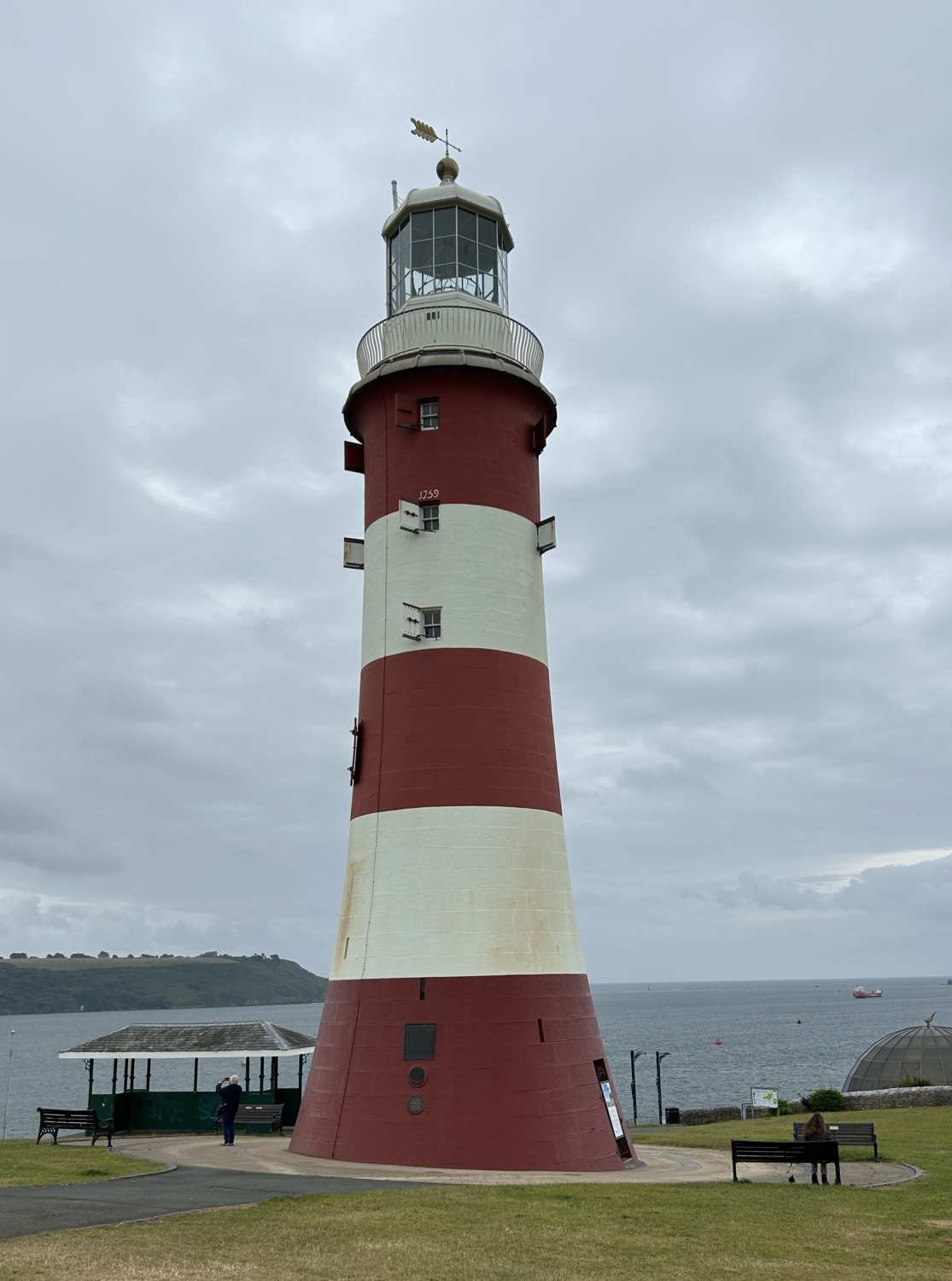The day after Ludlow, we went to see the Roman Baths in Bath, England. Bath is a delightful city on its
own, but the #1 thing to see in Bath is the Roman Baths. So we thought that would be a good place to start.
After we got our tickets, we went through the entrance and picked up a listening device. As I went through the Baths, I could press the number that we saw in the room and listen to a recording about it. I could listen to the whole recording or move on to another number when I was ready to see the next thing. The numbers were not in sequence, so I had to be sure to enter the correct number for what I wanted to listen to. Tom and I were often listening to different descriptions because we were interested in different things in the same room.
The first thing we saw in the Roman Baths was the Victorian building built around the Baths. The Romans built a temple on the on the site around 65 AD, in the first few decades of Roman Britain. Its presence led to the development of the small Roman urban settlement known as Aquae Sulis around the site. The Roman baths – designed for public bathing – were used until the end of Roman rule in Britain in the 5th century AD. The original Roman baths were in ruins a century later, although people continued to live in the area.
The baths have been modified on several occasions, including the 12th century and the 16th century. The spring is now housed in 18th-century buildings. Victorian expansion of the baths complex followed the Neoclassical tradition established by the Woods. In 1810, the hot springs were thought to have failed and William Smith opened up the Hot Bath Spring and restored the water to its original course. The Baths have been designated by Historic England as a grade I listed building. The City of Bath is a UNESCO World Heritage Site.
The Roman Baths are preserved in four main features: the Sacred Spring, the Roman Temple, the Roman Bath House, and a museum which holds artefacts from Aquae Sulis. Visitors can tour the baths and museum but cannot enter the water.
I thought the interpretation of the site was extremely well done. The audio recordings were helpful and there were silent videos playing that showed how Roman life would have played out in the Baths. The whole Temple to Minerva aspect was something that was interesting to me. A visit to the Baths was a religious pilgrimage as well as a health restorative.
Tom and I spent a good amount of time in the Baths. When we were done, we walked around the shopping streets of the city of Bath. There were lots of people out shopping and enjoying the open market squares. We picked up a pasty at a shop and did some people watching while the pasty cooled off. It had cheese, broccoli, and sweet corn, so it was different from the usual pasty, but still delicious. We also enjoyed browsing in a large bookstore close to the Bath Cathedral.
After our morning in Bath, our tour continued to Wells. We didn’t spend long there, but we were able to take a nice group photo in front of the Wells Cathedral. Wells is the smallest city (only 12,000 people) in England to have a Cathedral. Our group had tried to take a group photo before, on our Ring of Kerry day, but it was raining and cold and windy. Everyone was so huddled in their rain gear you could barely see our faces. The picture in Wells turned out much better, although some smart aleck photobombed our group photo! Fortunately only his hair and eyes are visible.
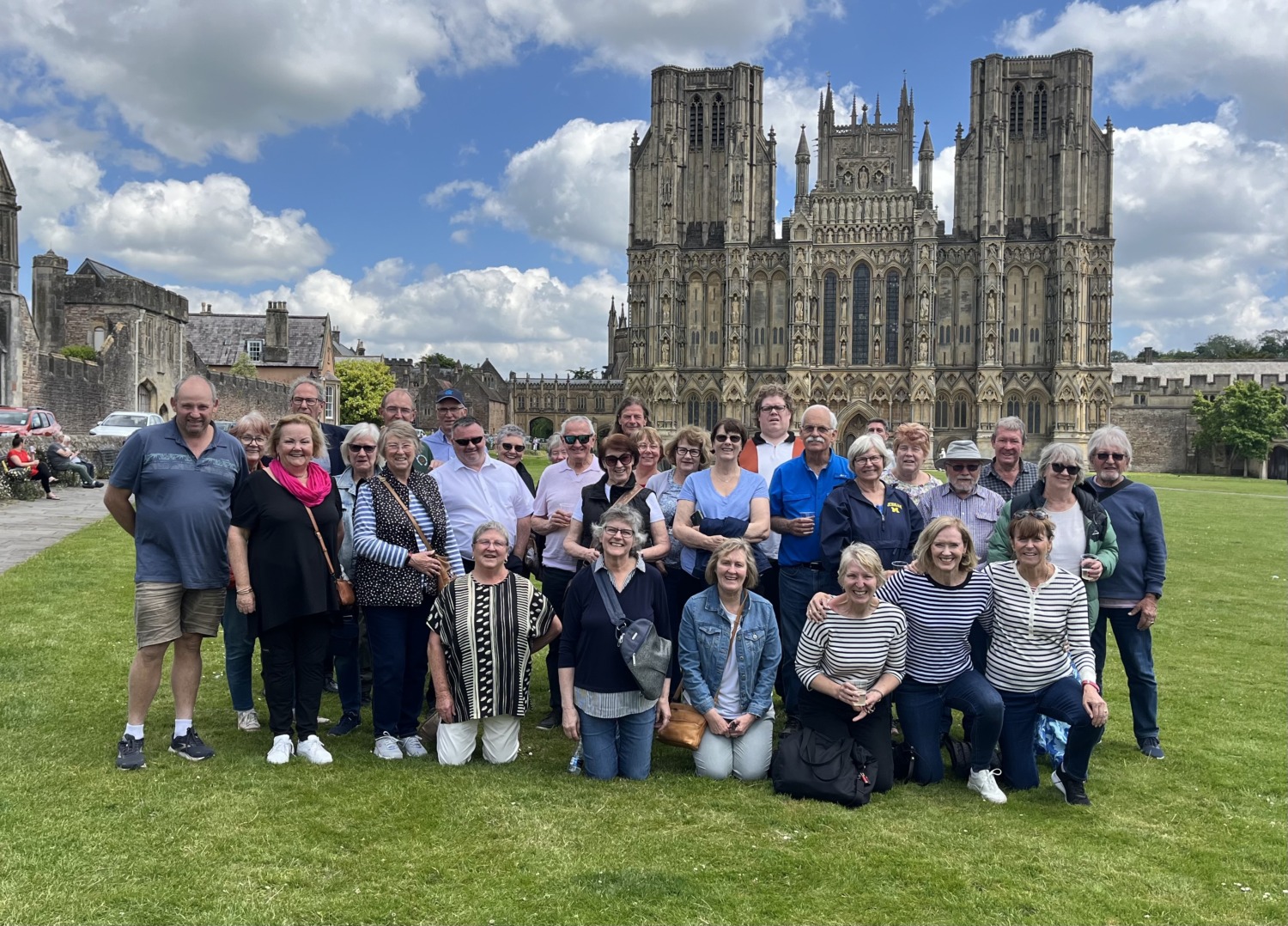
Nigel led us on a quick walking tour around the pretty city. We saw the Cathedral, the Bishop’s Palace, the swans in the moat, and the world-record long jump set by Mary Rand in 1964. She was born in Wells.
During the afternoon, our tour group stopped at a rest stop for a potty break and found one of the most unusual sites we had seen on our tour of the United Kingdom and Ireland. It wasn’t a cathedral or castle or a UNESCO World Heritage site. It was a launderette, right there at the rest stop. We all agreed it was a brilliant idea and would be very handy for people caravanning or for truck drivers. But it was funny the way we all gathered around it and discussed it like it was some wonderful neolithic artifact.
We finished our day in Plymouth. Most of the rest of the group was going out for a Cornwall dinner, but Tom and I were looking forward to a little free time. After all the time on the bus, we wanted to walk. We headed up the hill from the hotel to the Plymouth Hoe (high place). The Hoe is a beautiful, oceanside park with lots of monuments. There is a huge war memorial, a lighthouse, and a statue of Sir Francis Drake. He was on the Hoe bowling when informed that the Spanish Armada had been sighted coming around the coast. He finished his game before boarding a ship to defeat the Armada.
It was just a quick walk because it was getting ready to pour down rain. Tom and I wanted to pick up some supper and be back in our hotel room before the rain began. We headed down to the Tesco around the corner and got a salad, rolls, and chicken for supper. Then we enjoyed a quiet evening in our room, resting up for the last full day of our tour.

